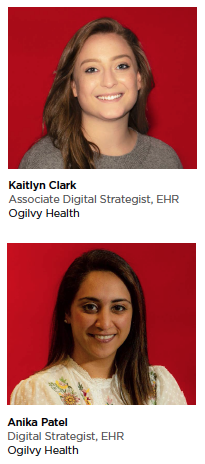 The digital age has been making waves since the late 1900s and the electronic health record (EHR) industry is one small piece in a vast pool of digital channels available for pharmaceutical companies through which to message their brands. The EHR, or EMR (electronic medical record), has been an important, useful vehicle used to deliver personalized and targeted messages to health care professionals in real time.
The digital age has been making waves since the late 1900s and the electronic health record (EHR) industry is one small piece in a vast pool of digital channels available for pharmaceutical companies through which to message their brands. The EHR, or EMR (electronic medical record), has been an important, useful vehicle used to deliver personalized and targeted messages to health care professionals in real time.
The EHR provides physicians with the ability to view their patient’s records concisely and has become a place for them to receive timely information about approved therapies that align with their specialty and their patient’s needs. This information is provided by brands that are working to distribute messaging through the EHR and is designed to be delivered in in a fast, effective, and nonintrusive way. Access to new therapies, clinical data, and patient support are only a few of the many resources readily available to healthcare providers in their clinical workflow. Messaging through the EHR allows these resources to be delivered accurately to offer insight and knowledge to the provider, from login to the point of ePrescribing. This can lead physicians to identify new and potentially more effective treatment plans for patients that they may not have considered previously.
When communicating via EHR, strategists develop business rules, or triggers that include, but are not limited to, targeting demographics, patient history, geographic region, and physician specialty. Once these business rules are fulfilled within the EHR workflow, a meaningful and relevant message appears for the physician. This message could be a visual banner, text-based clinical message, copay/savings card information, or a note for the dispensing pharmacist, just to name a few. The EHR is a preferred messaging channel by doctors, as shown by a Sermo study that states 78% of providers prefer that pharmaceutical and healthcare companies send product updates to their office via EHR.1
A Communication Channel
Through EHR aggregators, brands have incredible reach to physicians in all specialties as pharmac companies have been increasingly using the EHR to share messages with their audience. EHR has proven itself to be an effective channel through analytics and physician feedback; it is a great addition that compliments and reinforces the rest of a brand’s multichannel campaign.
The business rules developed by brand strategists are designed to ensure that the right type of messages will render to the right clinician’s workflow while they are with the right patient at the right time. This allows brands to specifically target HCPs while simultaneously driving home the idea of personalized care.
Every multichannel engagement team has their own call to action (CTA) for their viewer; however, many channels do not allow for immediate actions to be taken at the point of face-to-face patient care. Physicians see messages in the EHR at various points of the workflow, allowing these CTAs to be performed almost immediately with the ability to track measurement through analytics. For example, a message may have a CTA of, “click here to learn more about this study." The physician will then be presented with information about the therapy conveniently delivered to them through the message at a specific point in their EHR. At that point, they have the option to click through the message to learn more while they are engaged with their patient. Analytic teams can gather information based on how often physicians are getting more information, which gives brand marketers an accurate report of the effectiveness of their messages. Not only is this a beneficial statistic to determine the success of the campaign, it allows brands an opportunity to speak directly to the physician where other channels cannot.
Campaigns can benefit from EHR as another channel because of its extensive reach. More than 87% of U.S. doctors use EHRs in their practice,2 meaning brands can speak directly to a larger portion of their target market. This alone makes the system a very valuable asset to larger, multichannel campaigns. It allows for the reinforcement of the brand’s key messages at the point just before a physician prescribes, with the added benefit of accurate targeting without information overload.
Custom Brand Messaging
The digital space is constantly evolving, and the channels in which HCPs receive information will also continue to change. Healthcare providers, like the rest of us, will adapt to changes, and, by keeping a close eye on the channels they use and the materials they access, we, as marketers, have the opportunity to not only recognize how best to get the information to them, but quickly identify which materials resonate, which don’t, and why. The EHR is an invaluable tool in helping to target and customize a brand’s message, while ensuring that the messaging is consistent across a multichannel campaign — a strategic must for any competitive brand these days.(PV)
Editor’s Note:
1 Internal survey done with Sermo Pulse 6/1/16; 2 https://www.cdc.gov/nchs/data/ahcd/nehrs/2015_nehrs_web_table.pdf
Ogilvy Health is committed to creativity and effectiveness in healthcare communications, everywhere.
For more information, visit ogilvychww.com.











